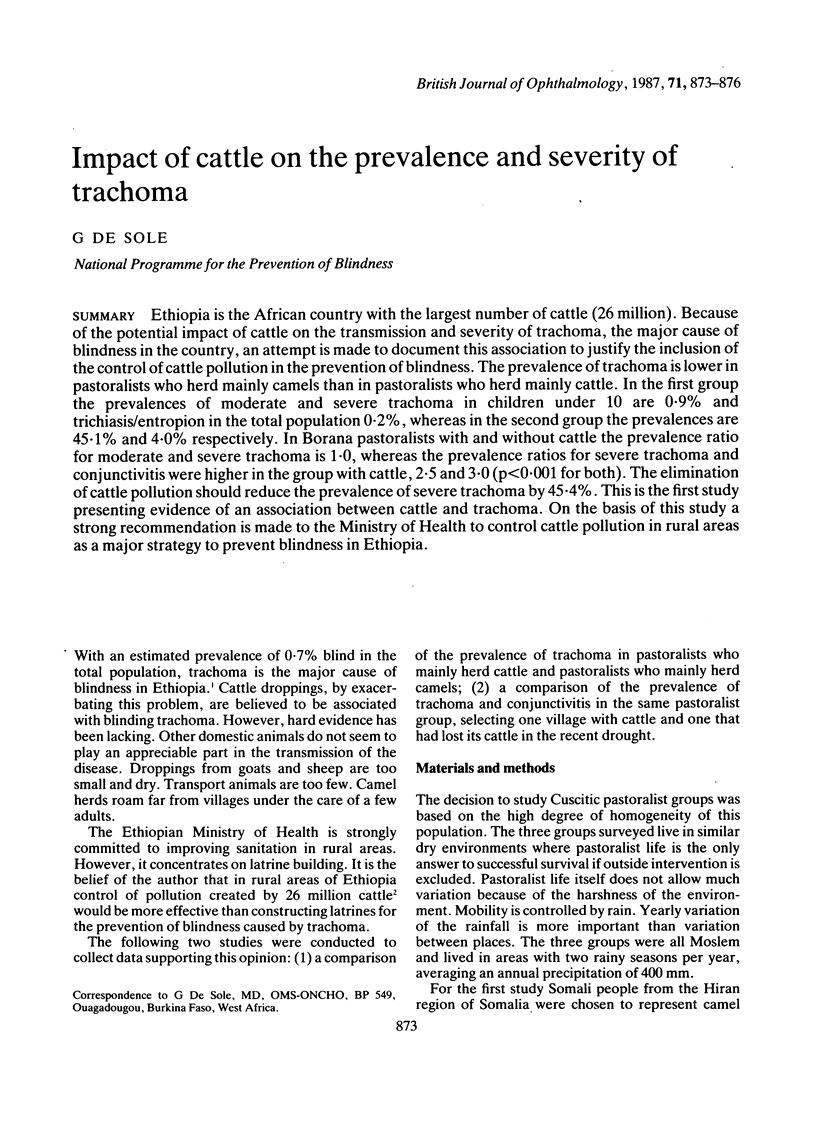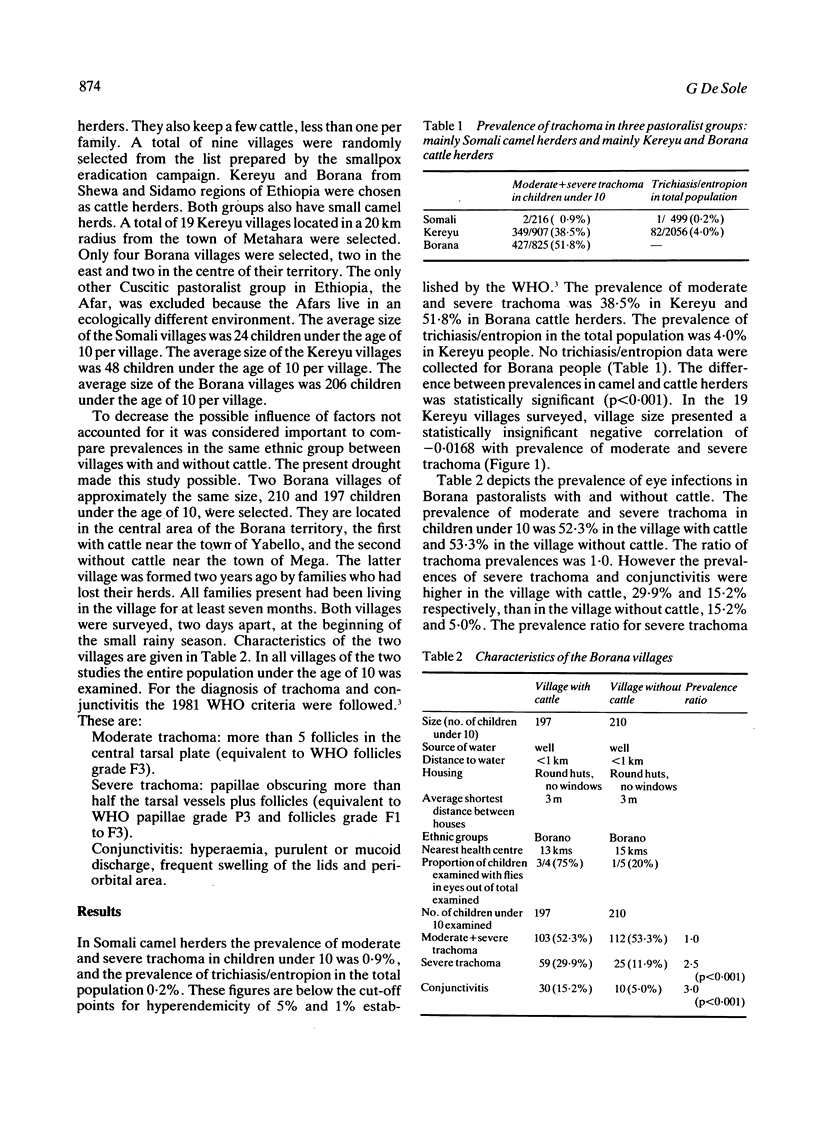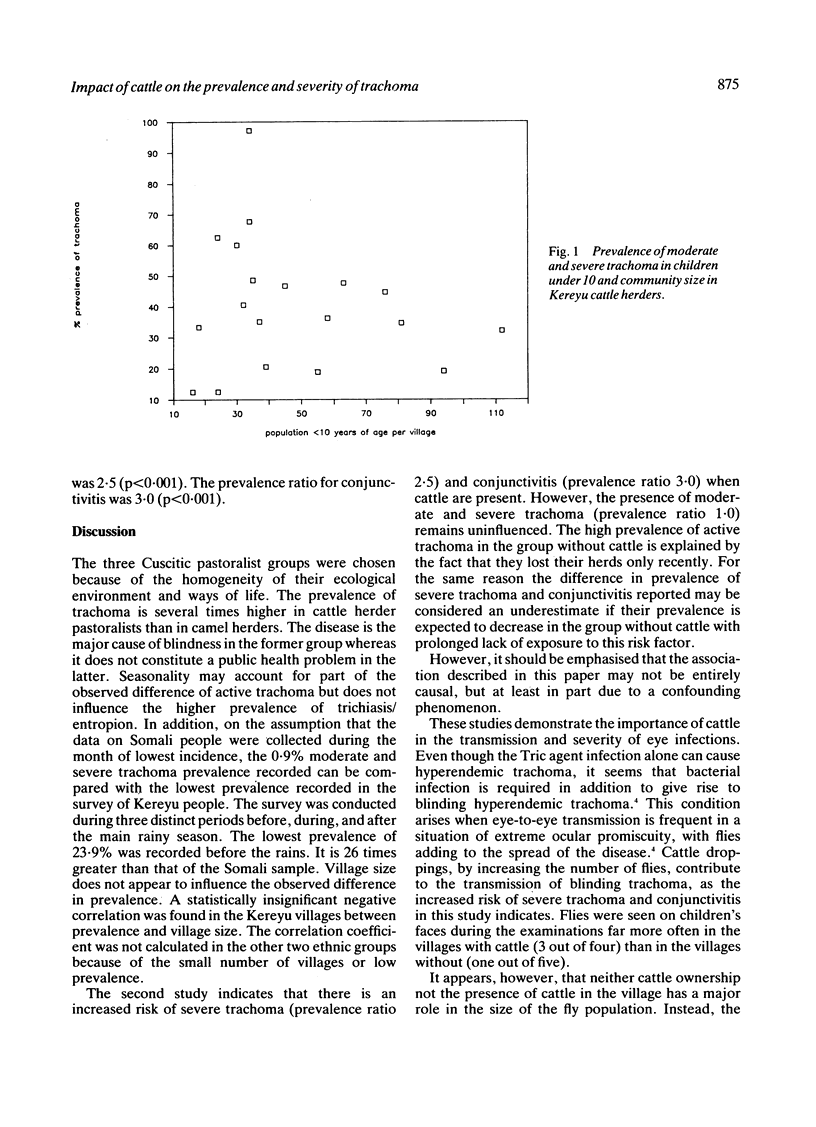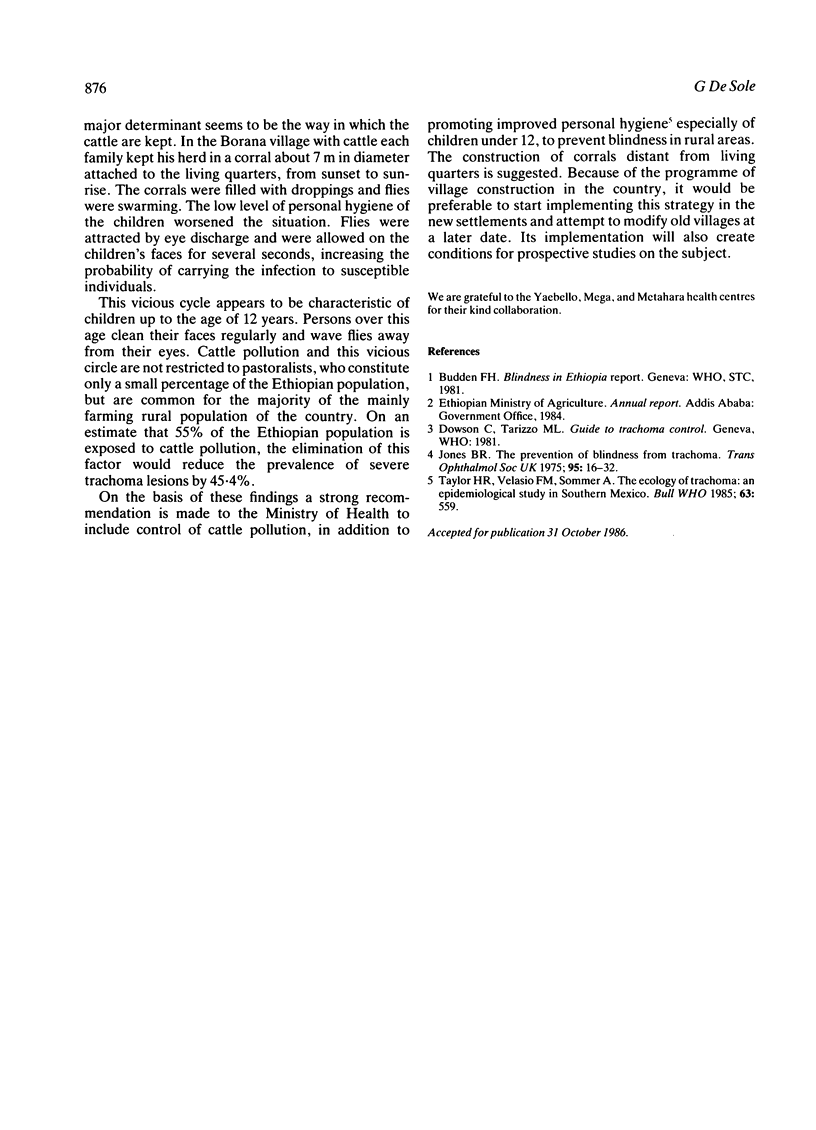Abstract
Ethiopia is the African country with the largest number of cattle (26 million). Because of the potential impact of cattle on the transmission and severity of trachoma, the major cause of blindness in the country, an attempt is made to document this association to justify the inclusion of the control of cattle pollution in the prevention of blindness. The prevalence of trachoma is lower in pastoralists who herd mainly camels than in pastoralists who herd mainly cattle. In the first group the prevalences of moderate and severe trachoma in children under 10 are 0.9% and trichiasis/entropion in the total population 0.2%, whereas in the second group the prevalences are 45.1% and 4.0% respectively. In Borana pastoralists with and without cattle the prevalence ratio for moderate and severe trachoma is 1.0, whereas the prevalence ratios for severe trachoma and conjunctivitis were higher in the group with cattle, 2.5 and 3.0 (p less than 0.001 for both). The elimination of cattle pollution should reduce the prevalence of severe trachoma by 45.4%. This is the first study presenting evidence of an association between cattle and trachoma. On the basis of this study a strong recommendation is made to the Ministry of Health to control cattle pollution in rural areas as a major strategy to prevent blindness in Ethiopia.
Full text
PDF



Selected References
These references are in PubMed. This may not be the complete list of references from this article.
- Jones B. R. The prevention of blindness from trachoma. Trans Ophthalmol Soc U K. 1975 Apr;95(1):16–33. [PubMed] [Google Scholar]
- Taylor H. R., Velasco F. M., Sommer A. The ecology of trachoma: an epidemiological study in southern Mexico. Bull World Health Organ. 1985;63(3):559–567. [PMC free article] [PubMed] [Google Scholar]


